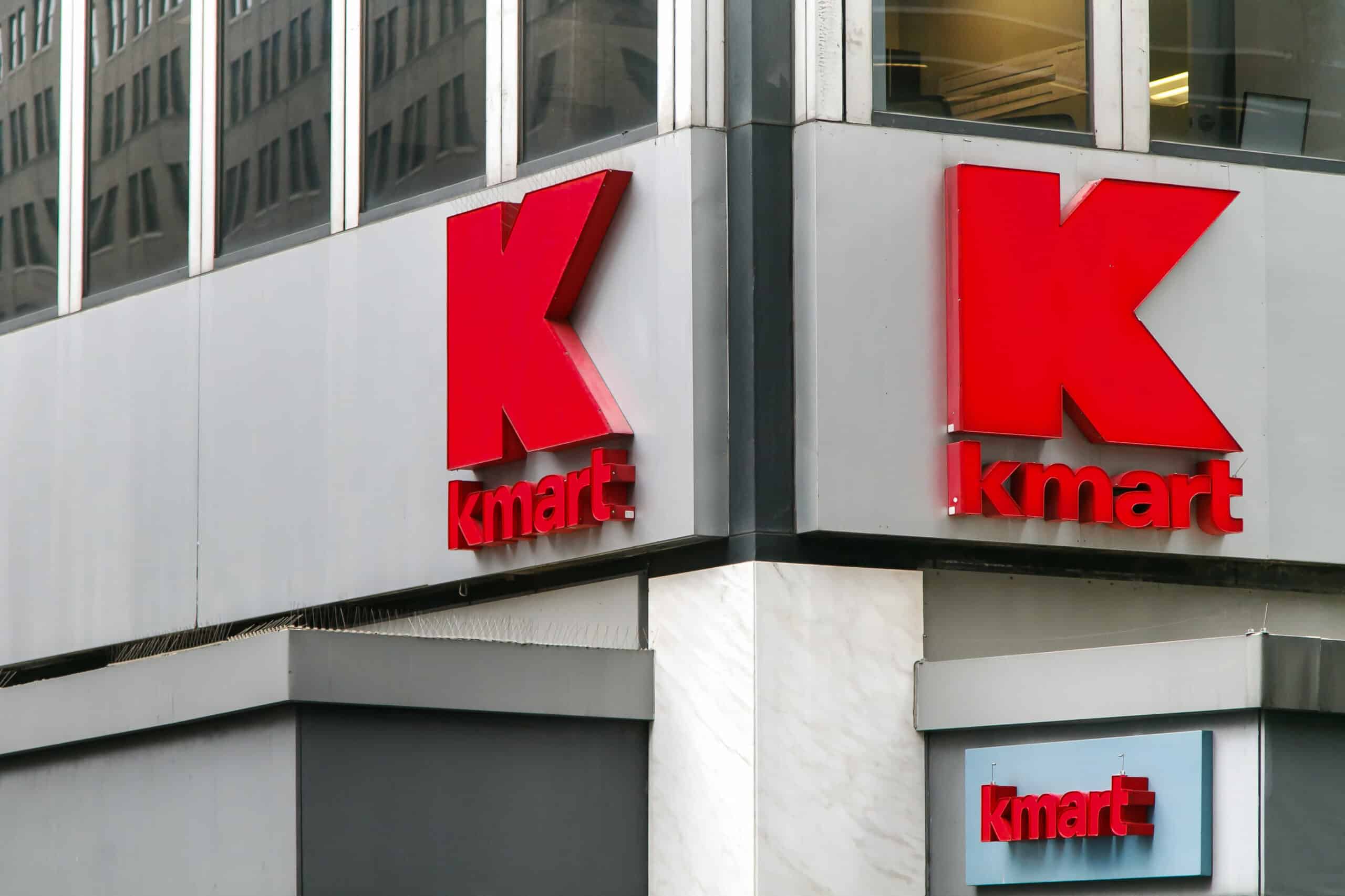It’s one of the biggest fails in business history - Kmart.
You may think you know the story - a big brand stops caring about customers, who run to online competitors.
But contrary to popular belief, Kmart’s problems were way bigger than Amazon.
And actually, lots of them weren’t even Kmart’s fault.
Today I’m breaking down some of the sneaky business and psychology traps that the Kmart leadership team fell into … and you could too.
Prefer to watch? Check out the YouTube video below:
1. Kmart the Elephant
To understand why Kmart failed, you really need to understand why it succeeded - at least at first.
Founded in 1962 - the same year as Target and Walmart - Kmart would eventually become the country’s leading discount retailer. But its roots went much deeper.
Kmart started life as the SS Kresge Company founded by Sebastian Kresge, an American entrepreneur who opened his first store - a five and dime variety shop - way back in 1897. Variety stores ruled retail for many years - they were where most middle and lower class people shopped at the time - they were small and you could walk there, but they had limited stock and they didn’t always have the lowest prices.
But by 1962, it became clear to Kresge’s company that American shopping behavior was changing and they’d have to change to keep up. Car ownership started going way up in the 1950s, and advances in road construction and auto tech meant that people could leave the city and move to a newly created concept - the suburb.
So to cater to this new customer, the SS Kresge Company - now led by a man named Harry Cunningham - decided to open a new kind of store, the discount retailer. These would be larger stores with greater variety, in standalone locations with a big parking lot so people could drive up and buy clothes, toys, food, and electronics all in one place.
Cunningham called this new store concept Kmart and it was an immediate hit.
Here’s what made Kmart so successful:
1. They served an underserved customer.
The American suburbs in the 60s were a hodgepodge of local stores. But when a Kmart moved in people saved time, money and hassle doing most of their shopping in one place.
2. Kmart expanded like crazy giving them what’s called economies of scale.
Kmart CEO Harry Cunningham knew a business opportunity when he saw one, opening Kmarts as fast as he could. At one point, a new store opened every single week.
Having so many stores meant they could start offering lower prices than competitors. Economies of scale allowed them to buy in bulk from manufacturers who would give them a discount, and they passed those savings on to customers.
3. The store appealed to everyone.
Basically anything you needed to buy could be found at Kmart at a lower price than variety stores or local competitors - at least at first.
That’s why when the concept of discount retail was new - Kmart dominated.
Even Sam Walton - the founder of Walmart - recognized how intimidating Kmart was to other brands.
He called Walmart “a flea fighting an elephant” - it’s hard to believe in 2023, but for many years Walmart was the flea… and Kmart was that elephant.
2. The Power of Focus in Marketing
Close your eyes and imagine a Kmart shopper.
Who do you see?
If you had done this exercise with 10 Kmart executives in the 90s they probably would have come up with 10 different answers. That’s because Kmart didn’t really have a great idea of who it wanted to serve. They were so focused on being known for low prices that they couldn’t agree on WHO needed to know that they had low prices.
Brand strategist Eric Beder, said “One of the key problems of Kmart is that they have not created a niche outside of pricing.” Think of a niche like a target audience - the people your business can serve better than anyone else.
In the early days Kmart didn’t need a niche because it was the only store of its kind in most places. But when competition is introduced into an industry - in this case discount retailing - it forces brands to split up the market to survive. They each pick ideal group of people and focus their merchandising, marketing, and store experience on them.
The goal is that when a group like moms of young kids - for example - think “I need back to school clothes” the first place they think of is Kmart. Because Kmart has spent a lot of time and money marketing to them and making Kmart a nice place for them to shop.
Marketers call this concept “mental availability.” In other words, how easily does a brand spring to mind when you need to buy something? The answer for a long time was Kmart, because it was the only game in town. But when other discount retailers popped up, Kmart lost out to Walmart and Target who knew exactly who their customers were and what they wanted.
3. Destroyed by Arrogance
The corporate culture of Kmart is a fascinating case study into the psychology of a market leader. When you’re the elephant - to go back to Sam Walton’s metaphor - everyone else is a flea. And you start forgetting what it took to become the elephant in the first place. You get arrogant, you start thinking you’re smarter than everyone else and that you’ll never be beaten or be wrong.
Meanwhile, those fleas are hungry.
Kmart fell into a common psychological trap for brands who dominate an industry for a long time - they started getting overconfident. Overconfidence is actually a cognitive bias - an error in thinking. And it describes people’s tendency to be a little too optimistic about their abilities, their intellect, and their continued success. It’s one of the most dangerous thinking traps any company or leader can fall into.
When people are overconfident, they get comfortable. They stop thinking of themselves as being in a war with their competitors - which during the 80s and 90s when Kmart really fell off - was exactly what was happening in discount retail.
While Kmart was busy growing like crazy, Walmart had taken its time to perfect its business model, niche, and operations BEFORE opening more stores. And unlike Kmart, Walmart was constantly in search of ways to make itself better:
- They were early adopters of Barcodes and RFID technology - which made it easier to track inventory.
- In 1987 they created the world’s largest private satellite network so they could communicate with each other and share data - that’s 8 years before the internet as we now know it existed.
- And they were one of the first retailers to use computerized checkout systems.
All this tech made it much easier for Walmart to keep their shelves stocked, know what products their customers wanted, and get better prices from suppliers. But Kmart could never manage to be nearly as efficient - mostly because they were overconfident that their way was the best way.
And once Walmart perfected its approach, it started an aggressive expansion project in the 1980s, marching toward an arrogant Kmart with one thing on their mind - total domination.
4. "The Customer Should Suffer"
Kmart’s store experience never really managed to hit the right note with customers.
Baked into Kmart’s corporate culture was this idea that the customer should suffer - their words - to earn their lower prices.
And old, dingy stores were one thing Kmart thought customers should just put up with.
But by the 90s, Walmart had closed in on Kmart and their leadership knew it had to DO something to compete.
So its stores underwent a large refurbishment project,
but at a cost of over $1B which the then CEO had borrowed at a high interest rate.
At the same time that Kmart was rapidly losing sales and customers to Walmart which meant its ability to pay the loan back was disappearing.
Rather than pay to refurbish underperforming stores, they started closing them instead.
Which again, ate into profits setting them up for a cash crisis and a death spiral.
5. Branding Gone Wrong
Kmart tried a number of things to save themselves during the 90s - and some of them were actually brilliant. The best one was focusing on developing famous brands like Martha Stewart’s Everyday - which they built into one of the biggest and best known homewares brands.
But again, Kmart shot itself in the foot.
Its TV ads focused mostly on the brands it carried - like Martha Stewart.
But the problem with bringing in really strong brands and not developing your own, is that people will pop into a Kmart specifically to buy a Martha Stewart knife set and then leave without buying anything else.
Compare that to Target, who partnered with legendary industrial designer Michael Graves.
This partnership was so successful for Target because it didn’t focus on messaging only Michael Graves at Target - instead they used Michael Graves as a proof point that Target had lots of cute stuff at a good price, using Michael Graves to make the Target brand stronger, not the other way around.
Want to learn more about how your buyers tick (using marketing psychology, behavioral science, and predictive AI)?
👉 When you’re ready, Choice Hacking can help:
- Coaching: Looking for clarity, focus, and confidence in your marketing and/or career? Behavioral Science-powered 1-on-1 Coaching could be a good match for you.
- Courses & Skill Sessions: Improve your customer experience, customer journey maps, presentations, landing page conversion rate, and more with the power of applied behavioral science in a self-directed course.
- Training: We can help your team level up their work with psychology, behavioral science, and AI training.
- Consulting: Get professional insight to grow your business with projects like:




